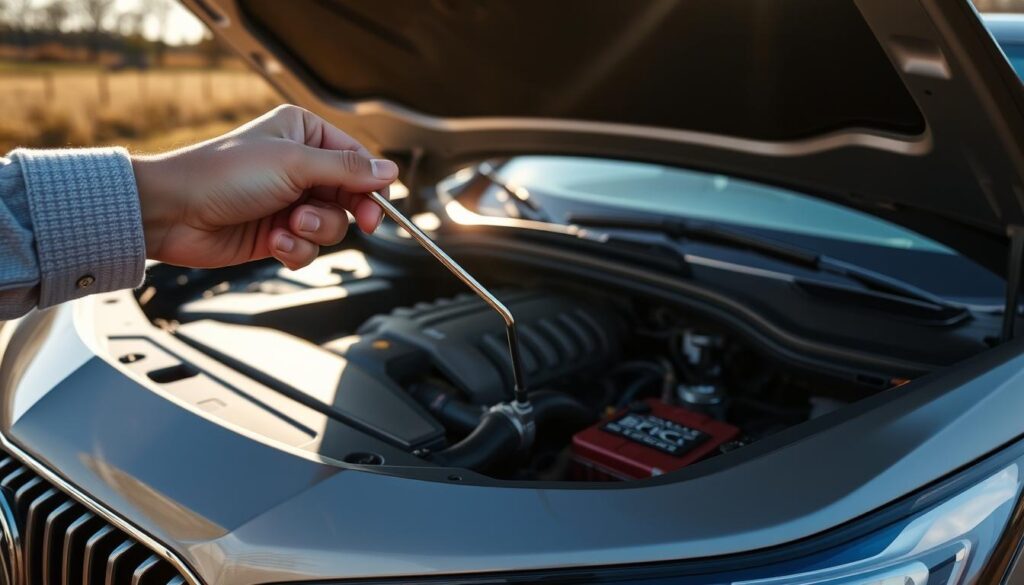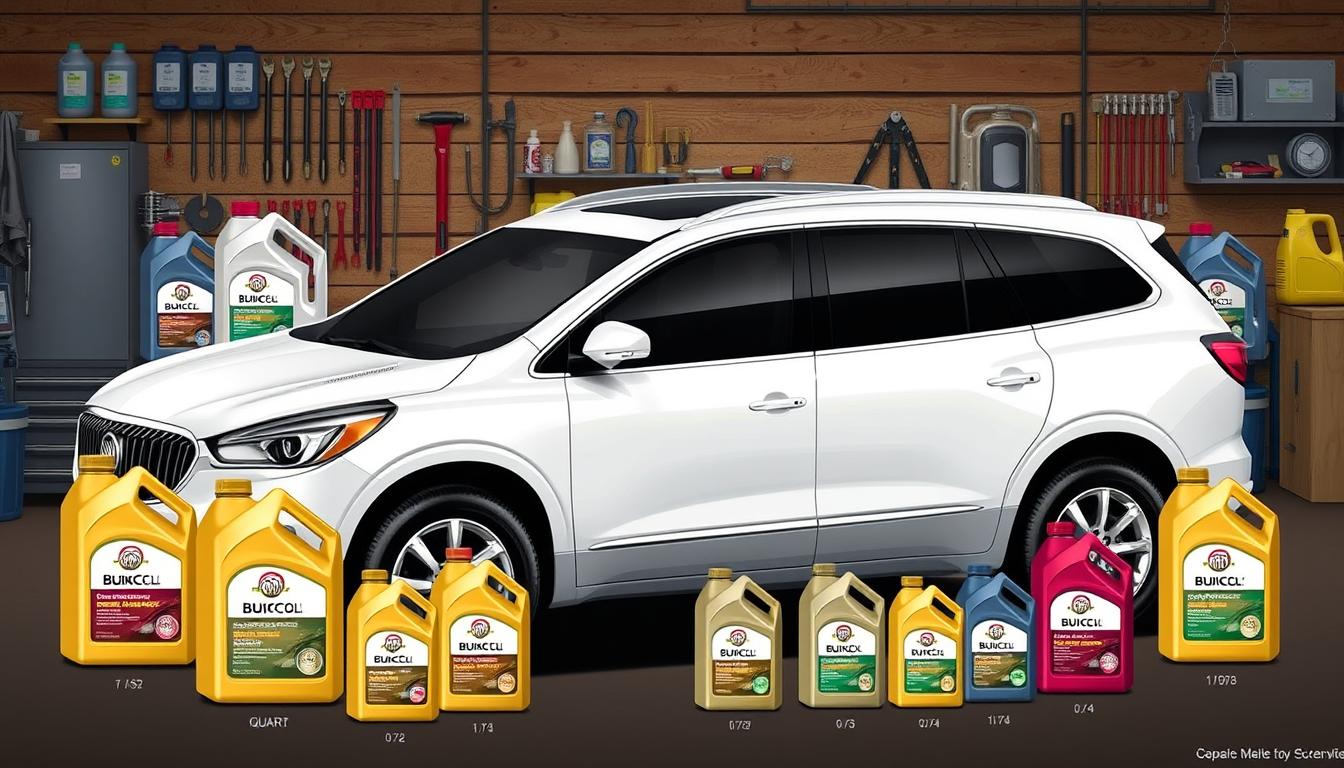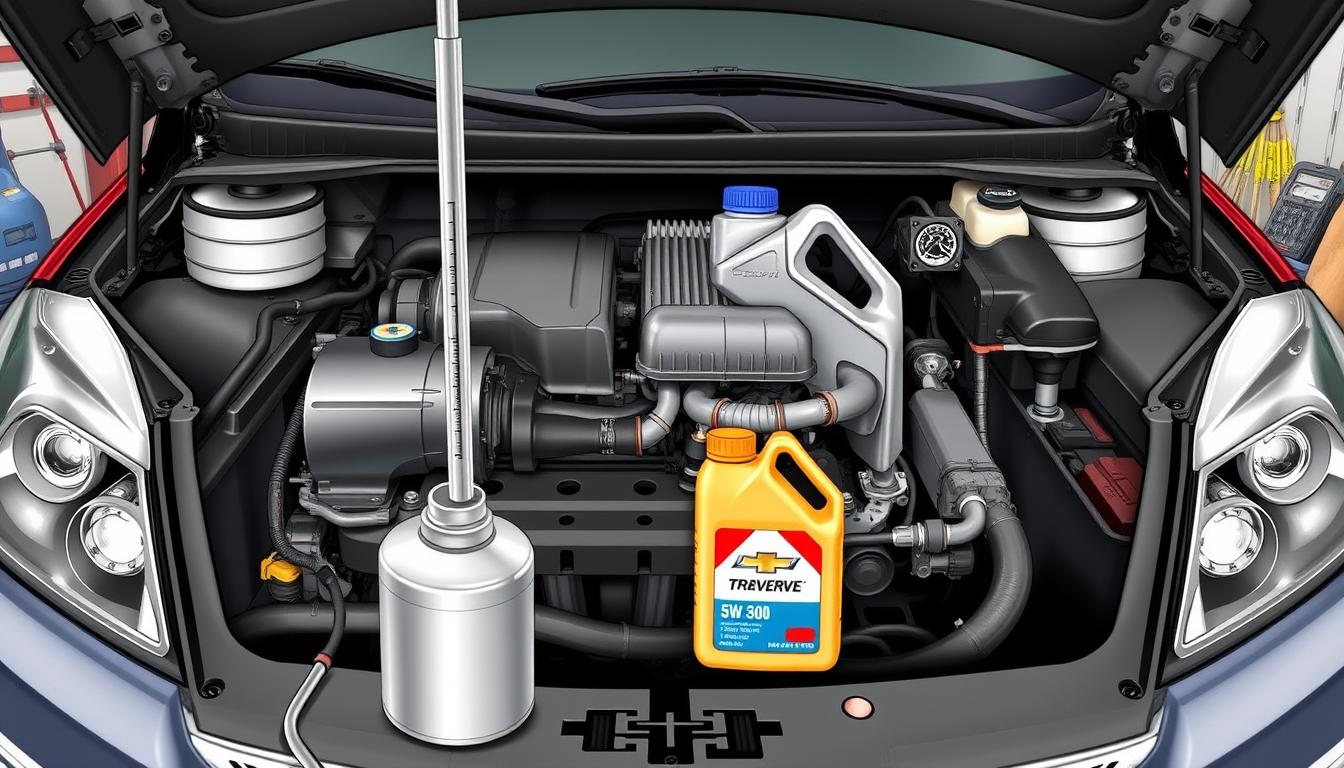Understanding the right oil type and capacity for your Buick Enclave is crucial. Do you remember driving it for the first time? The ride was so smooth, it was pure freedom. Each trip is filled with memories and laughter, and also those unexpected hiccups. Just like we need the right food to stay healthy, your Enclave needs proper care. This includes the right oil. We created this guide to make maintenance easier for you. It has all you need to keep your car running smoothly.
Key Takeaways
- The factory-recommended oil type for your Buick Enclave is 5W30, with a capacity of 5 to 6 quarts depending on the model year.
- Users often switch to 10W30 after reaching 65,000 miles for better performance.
- Typical oil consumption ranges from 1/2 quart after 5,000 to 6,000 miles.
- Regular oil changes are recommended between 5,000 and 6,000 miles.
- Popular oil types include Pennzoil Ultra Platinum Synthetic, Mobil 1, and Royal Purple.
Understanding Engine Oil Viscosity
Understanding engine oil viscosity is crucial for your vehicle’s health. Oil viscosity is about the thickness of the oil. It also talks about how easily it flows when it’s hot or cold. This affects how your engine works, whether it’s hot outside or freezing.
What is Oil Viscosity?
Oil viscosity makes more sense when you know about the rating system for engine oils. Take “5W-30” as an example. The “5W” tells us how the oil performs in the cold. The “30” shows us its performance at high temperatures. Choosing the right oil viscosity helps keep your engine running smoothly. This is important in both cold starts and hot weather.
The Importance of Choosing the Right Viscosity
Choosing the right oil viscosity is super important. It greatly affects how well your engine is lubricated. This impacts both performance and fuel efficiency. If the viscosity is too low, the oil won’t protect the engine well. If it’s too high, the oil won’t flow right, causing more wear. Always check your owner’s manual to find the best viscosity for your conditions.
Buick Enclave Oil Type and Capacity
It’s vital to maintain the right oil type in your Buick Enclave. The correct oil ensures your engine runs well and lasts longer. This is invaluable for the vehicle’s longevity and performance.
Recommended Oil Type for the Buick Enclave
The Buick Enclave recommended oil type is 5W-30. This is especially true for the 2009 Enclave CX models. For cars with over 65,000 miles, some drivers prefer 10W-30. This choice allows drivers to pick an oil that fits their car’s needs and driving style.
- Pennzoil Ultra Platinum Synthetic oil is a popular choice. Drivers use it between 95,000 and 112,000 miles.
- Mobil 5W-30 is also effective. It shows no oil consumption within 8,000-mile changes.
Oil Capacity Specifications
Knowing your oil capacity specifications is crucial for oil changes. For example, 2008-2010 Buick Enclave models need about 5.5 quarts. Meanwhile, 2011-2015 models require around 6.0 quarts. Always start with less oil than needed during DIY changes to avoid overfilling. It’s also essential to use the recommended oil type for your vehicle to ensure optimal performance. For instance, checking the Chevy Equinox oil type ensures you use the right grade, which typically depends on the engine size and year. Always consult your vehicle manual for specific guidelines related to both oil type and capacity to avoid any potential issues.
| Model Year | Oil Capacity (Quarts) |
|---|---|
| 2008-2010 | 5.5 |
| 2011-2015 | 6.0 |
Many drivers recommend monitoring proper oil levels closely. They also suggest considering professional service for oil changes. This ensures your vehicle stays in top shape, without the stress.

When to Change the Oil
Knowing when to change your Buick Enclave’s oil boosts its performance and life. It’s key to regular upkeep. Recognizing when it’s time for an oil change can dodge engine problems. Let’s look into what signs to watch for and when to change the oil.
Signs that Your Oil Needs Changing
There are a few signs that show your oil needs a change. Spotting these early can save you from big repair bills later:
- Dark or dirty oil: New oil is golden, but gets darker and dirty over time.
- Unusual engine noises: Knocking or ticking sounds might mean the lubrication isn’t working well.
- Oil change light: A lit oil change light on your dashboard is a clear sign to change the oil.
Recommended Change Interval
The 2021 Buick Enclave should have its oil changed every 7,500 to 10,000 miles, or 6 to 12 months. This can change based on how and where you drive. Tough conditions like stop-and-go traffic or towing mean you might need to change the oil more often. Keeping up with these changes keeps your engine happy.

| Interval | Miles | Months | Approximate Cost |
|---|---|---|---|
| Standard Change | 7,500 – 10,000 | 6 – 12 | $51 – $66 |
| Oil Filter Replacement | N/A | N/A | $10 – $13 |
| Average Price Range at Dealerships | 6 quarts | N/A | $41 – $53 |
By paying attention to these signs and sticking to the oil change schedule, your Buick Enclave’s engine will last longer. Regular maintenance isn’t just about keeping your car running; it’s about keeping it ready for any journey ahead.
How to Check Your Buick Enclave Oil Level
Keeping your car in top shape means regularly checking the oil. It’s key to a smooth-running engine. Knowing how to do this simple check can make your Buick Enclave last longer.
Step-by-Step Guide on Checking Oil Level
Here’s how to check your oil:
- Park on a flat surface to get a correct dipstick reading.
- Shut off the engine and wait a few minutes for the oil to settle.
- Find the dipstick, which has a bright handle.
- Take out the dipstick and clean it off with something that doesn’t leave lint.
- Put the dipstick back in fully, then remove it to see the oil level.
- See if the oil level is between the min and max marks on the dipstick.
Interpreting Your Oil Dipstick Reading
A healthy oil level is between the min and max marks. If the oil looks dark or gritty, you might need to change it. Keeping up with oil health can avoid engine troubles.

| Oil Status | Indication |
|---|---|
| Full | Oil level is good for engine lubrication. |
| Low | Need to add oil soon to avoid engine damage. |
| Dirty | Time for an oil change. |
| Clear | Might mean a leak or something else wrong; needs a closer look. |
Checking your oil makes sure the engine works well. It’s a big part of keeping your Buick Enclave running great.
Choosing the Right Oil Filter
Choosing a suitable oil filter is vital for your Buick Enclave’s health. It catches harmful particles, keeping the engine oil clean. This is crucial for the engine’s well-being. The right filter enhances both filtration and engine performance, critical for your car’s care.
Importance of Using the Correct Oil Filter
The ACDelco PF63 oil filter comes highly recommended for the Buick Enclave. It ensures the best fit and protection. Another great option is the FRAM Synthetic Endurance® Oil Filter. It offers 25,000 miles of protection and 99% efficiency with synthetic oil. This longer-lasting filter is perfect for reducing maintenance needs.
Recommended Oil Filter Part Numbers
For everyday driving, the FRAM Extra Guard® Oil Filter is advised, providing 10,000 miles of protection. For tougher conditions, consider the FRAM Tough Guard® or FRAM Force™ Oil Filters. They’re built for heavy-duty usage, offering up to 15,000 miles of protection. It’s important to replace the oil filter with every oil change, usually every 3,000 to 7,500 miles, following your vehicle’s guide. Picking the right filter secures your Enclave’s reliability and performance for the future.









